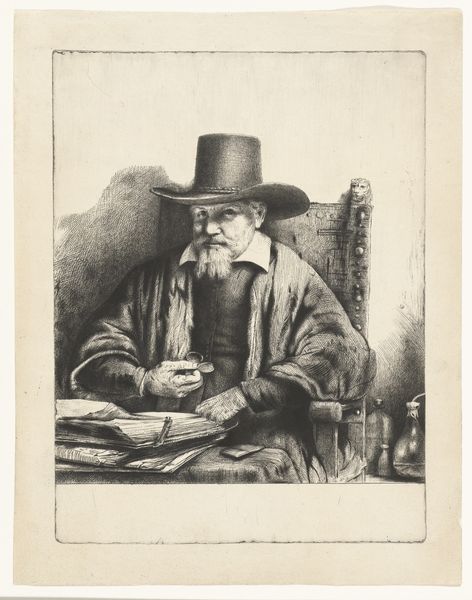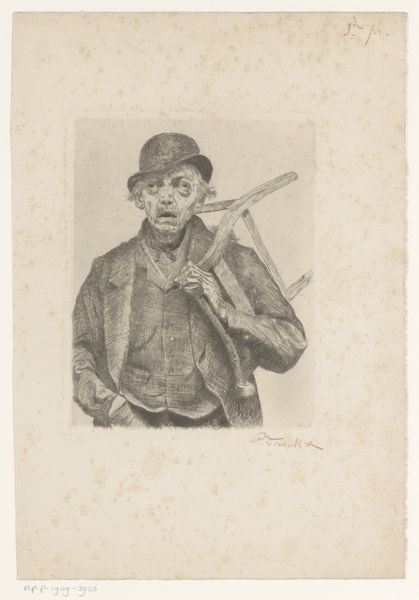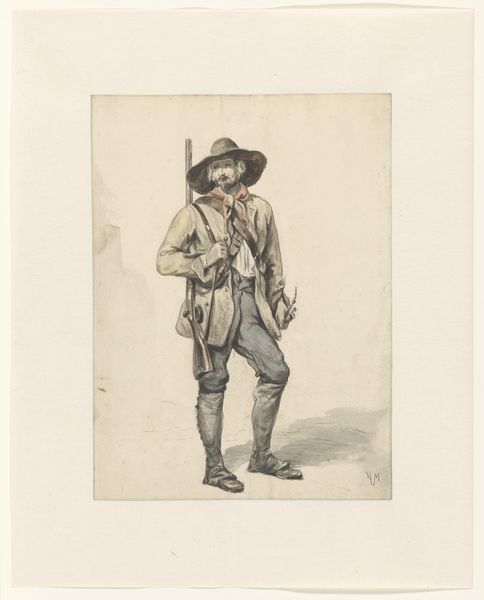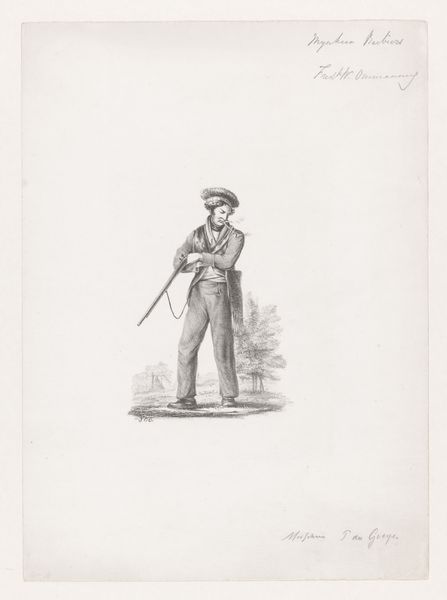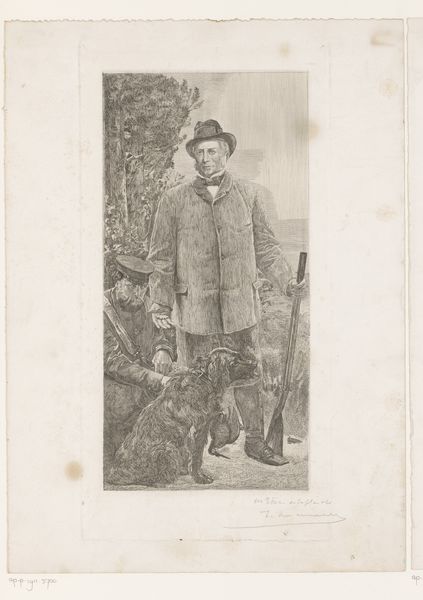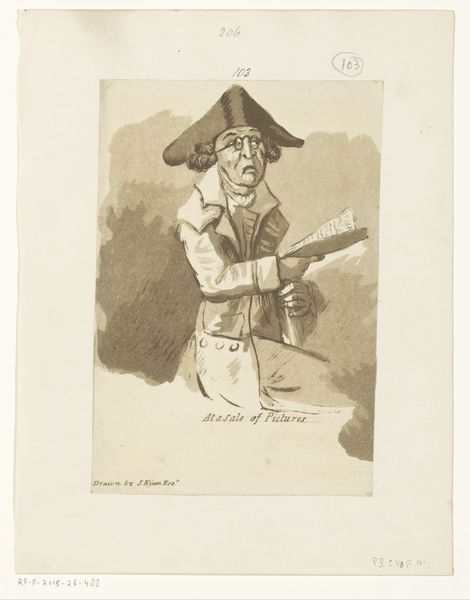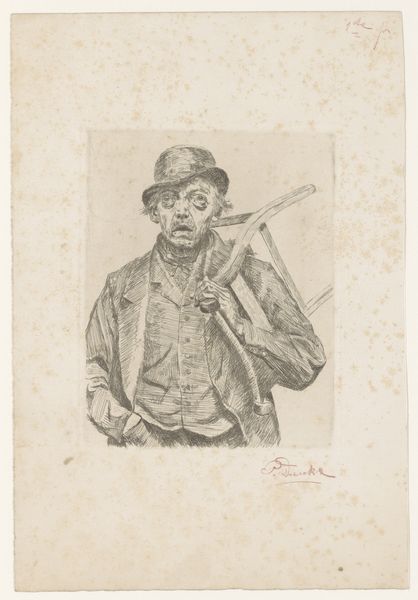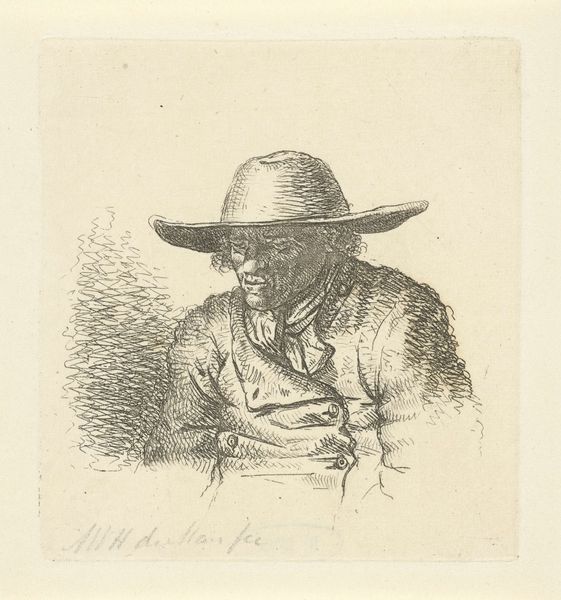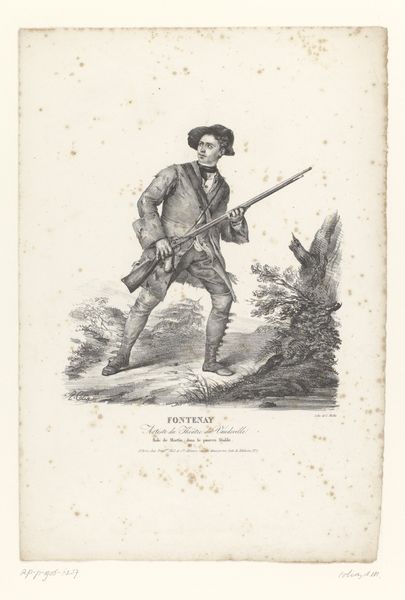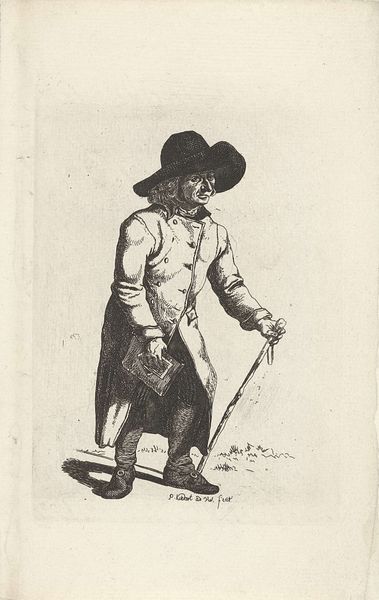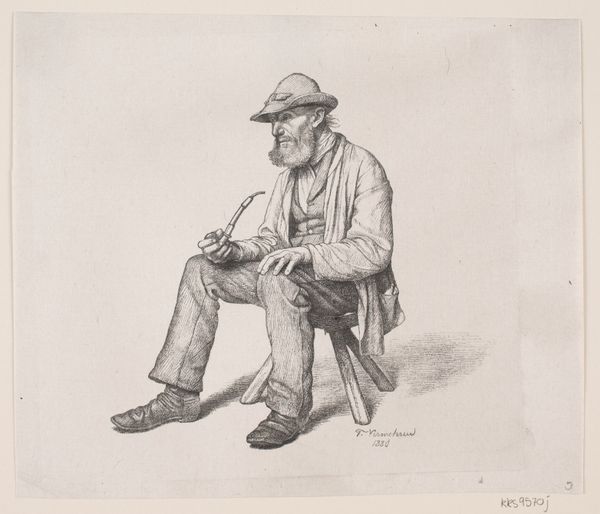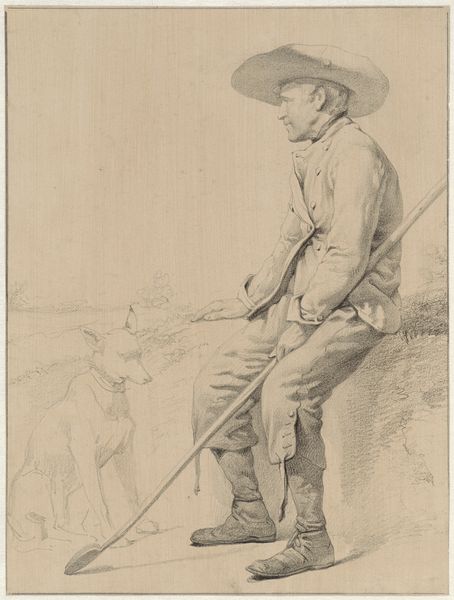
print, etching
#
portrait
# print
#
etching
#
old engraving style
#
landscape
#
limited contrast and shading
#
genre-painting
#
realism
Dimensions: height 319 mm, width 238 mm
Copyright: Rijks Museum: Open Domain
Editor: This is Frans Lauwers’ "Portrait of an Unknown Old Man with a Hunting Rifle," dating from sometime between 1864 and 1911. It’s an etching, a print, so it's monochrome and quite detailed. He looks tired but resolute. What do you see in this piece? Curator: What strikes me is how this seemingly simple portrait implicates ideas about masculinity, class, and access to land in 19th-century Europe. Consider the context: land ownership was often tied to privilege and power, and hunting, while ostensibly a recreational activity, became deeply intertwined with these social structures. Editor: So, it’s not just a portrait of an old man with a gun? Curator: Precisely. Look at how Lauwers depicts him: his clothing suggests a certain working-class status, but the hunting rifle hints at a negotiation with these social hierarchies. Was hunting a means for subsistence, a carefully regulated privilege, or a symbol of resistance against aristocratic norms? The print's limited contrast and shading seems to reflect a muted form of protest, don’t you think? Editor: I didn't think about it that way. It seemed more like a straightforward depiction. Curator: And whose gaze are we invited into? The "unknown old man" in the title underscores how unnamed, working class identities intersect and challenge traditional portraits of elites. What does it mean to elevate an ordinary man holding a weapon into the realm of fine art? Editor: That definitely gives me a lot to think about regarding the history of class and representation in art. Curator: Indeed. Considering how this piece reflects power dynamics, identity and representation provides rich grounds for considering intersectional narratives in art history. Editor: This conversation has really transformed my view of the artwork; I see the artwork less as a still-life scene and more as a complex statement. Curator: And hopefully, how images are so often rooted in—and speak volumes about—the social and political circumstances of their creation.
Comments
No comments
Be the first to comment and join the conversation on the ultimate creative platform.

